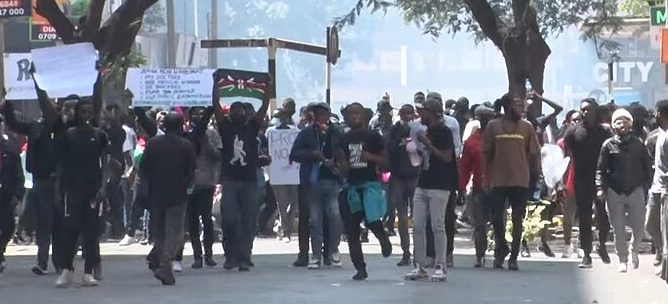The gun violence of the United States is an anomaly among most industrialized democracies. Other countries place many more impediments on gun ownership. Here, virtually anyone can obtain a gun, even someone as profoundly disturbed as Cho Seung Hui.
No Child Left Behind
We must face the hard truth that firearms are so easy to acquire in the United States that lethal mass shootings are mathematically inevitable.
Our nation was stunned by Cho Seung Hui’s shooting spree at Virginia Tech University where he killed 32 students and professors and wounded 15. As we mourn these deaths, we are left with two unavoidable questions: Could this horrific act of violence have been avoided? and What do we do about it? Neither question is easy to answer in a nation with over 200 million privately owned firearms including 65 million handguns.
The gun violence of the United States is an anomaly among most industrialized democracies. Other countries place many more impediments on gun ownership. Here, virtually anyone can obtain a gun, even someone as profoundly disturbed as Cho Seung Hui. In the standard background check, in the form of a call to the state police, Cho was not flagged as a prohibited purchaser. The fact that he had been institutionalized with a mental illness that caused him to present an imminent danger to himself and others did not show up in either the state or federal database.
Cho Seung Hui fired hundreds of rounds of ammunition striking his victims more than 200 times. He also missed some of his targets. If Congress had renewed the Federal Assault Weapons Ban of 1994, Cho Seung Hui wouldn’t have had 15-round magazines for his Glock pistol. The ban prohibited magazines that carry more than 10 bullets. That would have forced him to stop and reload more often, perhaps saving some lives.
Unlike the bloody assault at Virginia Tech, most people killed by firearms die as single victims. They are male and female and represent all races and age groups. Each year, thousands of children and teens are victims of gun violence.
The most recent figures from the Centers for Disease Control and Prevention reveal that 2,825 children and teens died from gun shots in 2004. Every four days, nearly 32 children are killed by guns in a relentless assault of gun violence against children. About as many children and teens were killed by firearms in America in 2004 as the total number of American service men and women who died in combat in Iraq and Afghanistan since those wars began.
Fifty-eight preschoolers were killed by firearms that year compared to 57 law enforcement officers. Shooting deaths occur in homes, in play areas, on our streets and children’s schools, day in and day out. But we don’t act to control gun proliferation.
As we were painfully reminded on April 16, our children are not safe even at school. There were many other school shootings before Cho Seung Hui killed 32 people at Virginia Tech. In October, 2006, a truck driver shot 11 girls, killing five, in an Amish schoolhouse near Paradise, Pennsylvania. Two teenagers killed 12 fellow students and a teacher at Columbine High School near Littleton, Colorado, in April 1999. A 15-year-old Springfield, Oregon boy shot both of his parents dead, then killed two classmates and wounded 25 others in May 1998. Two middle school students, ages 11 and 13, shot four students and a teacher and wounded 11 classmates in Jonesboro, Arkansas, in March 1998. Other deadly school shootings have taken place in Paducah, Kentucky; Edinboro, Pennsylvania; Pearl, Mississippi… the list is long. In each case, the shooters had easy access to firearms.
Our nation’s leaders must enact and enforce common sense gun safety laws that check the flow of firearms into our communities. These deadly instruments of destruction are a grave threat to everyone. We need legislation that requires thorough background checks for every gun sale. The Bureau of Alcohol, Tobacco and Firearms must receive sufficient funds to aggressively pursue corrupt gun dealers and black marketers. Stiffer anti-trafficking laws must be adopted nationwide. And the Assault Weapons Ban must be immediately reinstated.
Parents and community leaders have a responsibility as well. They should remove guns from their homes; organize nonviolent conflict resolution support groups in their congregations and communities; and refuse to buy video games and other products for their children and teens that glamorize or make violence socially acceptable or fun. Community leaders must turn schools and places of worship into venues of quality summer and after-school programs for children as positive alternatives to the streets. Communities should also adopt proven programs like Operation Ceasefire that encourage collaboration among families, faith groups, social service providers and the police to stop gun violence against and by children and teens.
The Second Amendment should not be construed as authorization to put guns in the hands of mass killers. We cannot wring our hands and do nothing until the faces of a new set of victims are splashed across the front pages of our newspapers. We have the power to act now to reduce gun proliferation and the violence it breeds. It’s the responsibility of all of us.
For more information on the cost of gun violence in America today, the Children’s Defense Fund’s Protect Children, Not Guns 2007 report provides an analysis of the latest data on child and teen gun deaths from the Centers for Disease Control and Prevention and action steps we all can take to stop the killing of children and teens (childrensdefense.org/gunreport).
Black Star News contributor Edelman is President of the Children’s Defense Fund.
Children’s Defense Fund www.childrensdefense.org 800-CDF-1200
Â
Â
Black Star News contributor Morial is the president of the National Urban League and past two-term Mayor of New Orleans. He can be reached via MaximsNews.com
To subscribe to or advertise in New York’s leading Pan African weekly investigative newspaper, please call (212) 481-7745 or send a note to [email protected]
Â
“Speaking Truth To Empower.�





